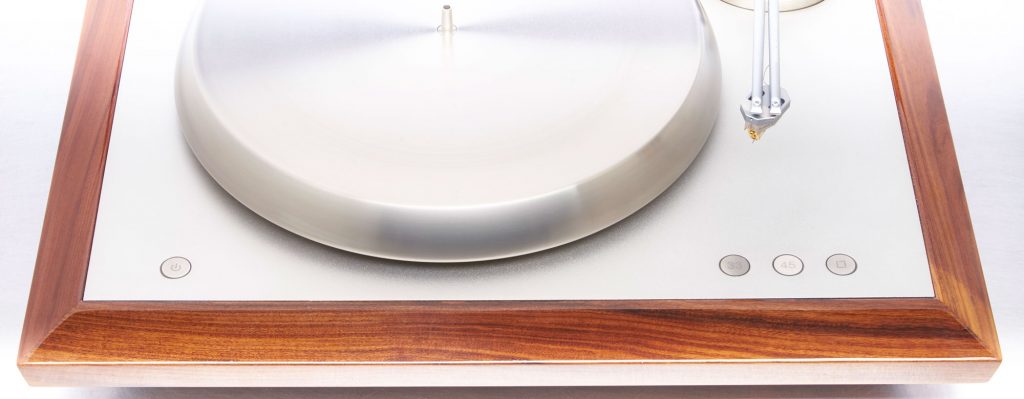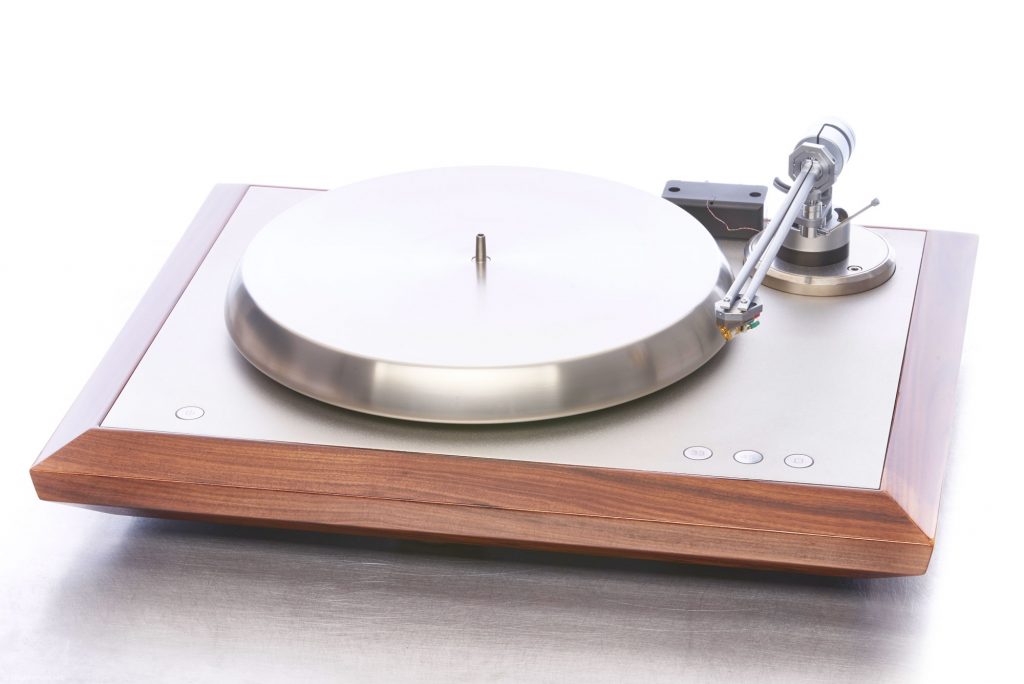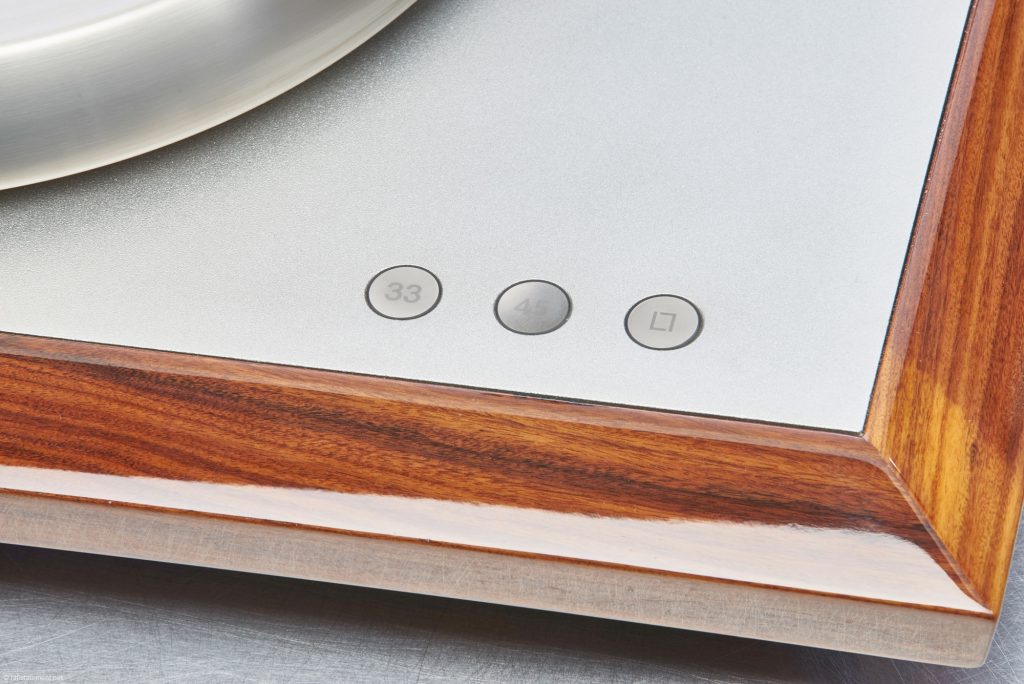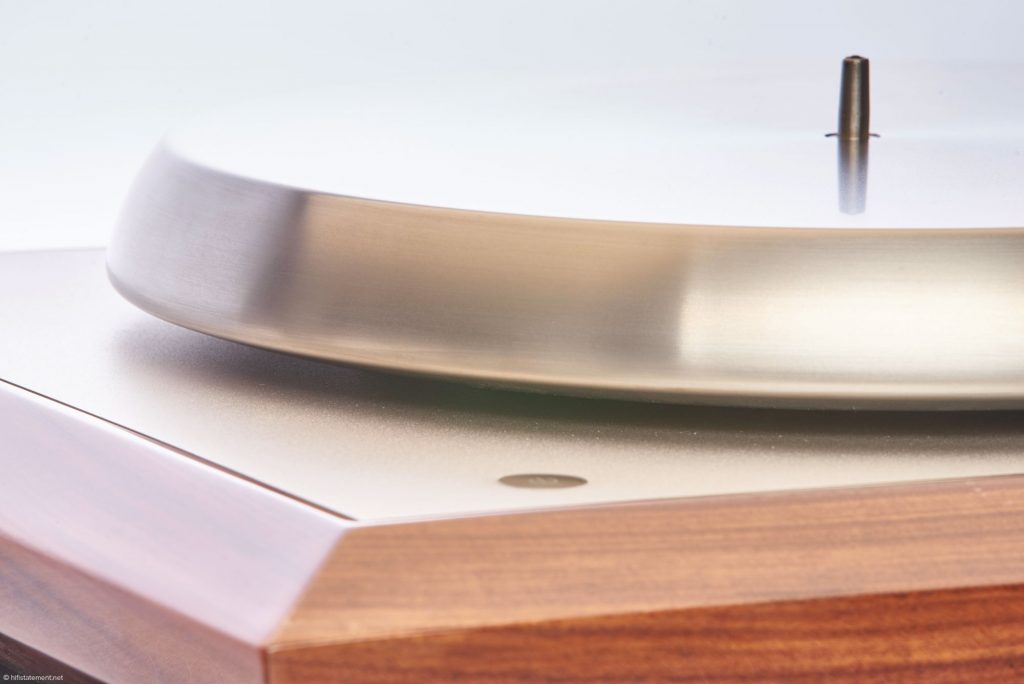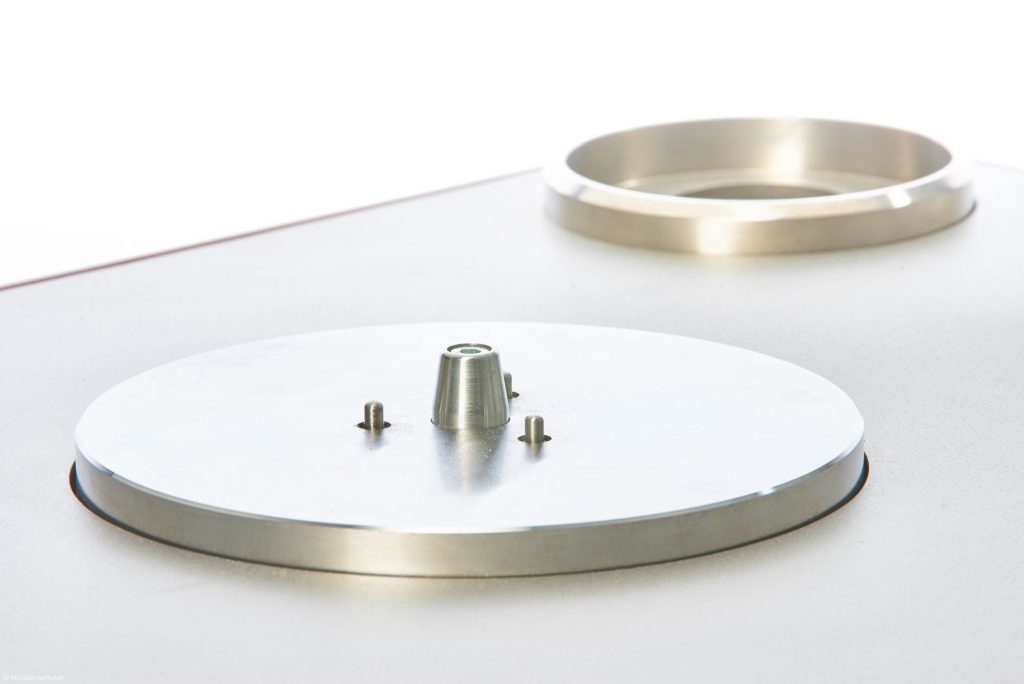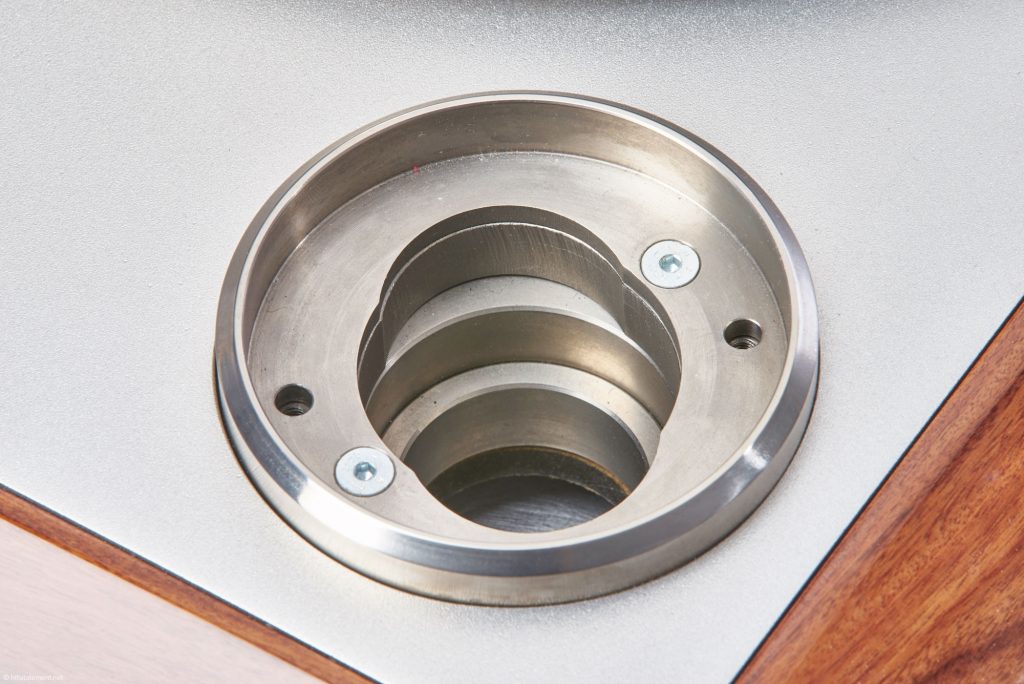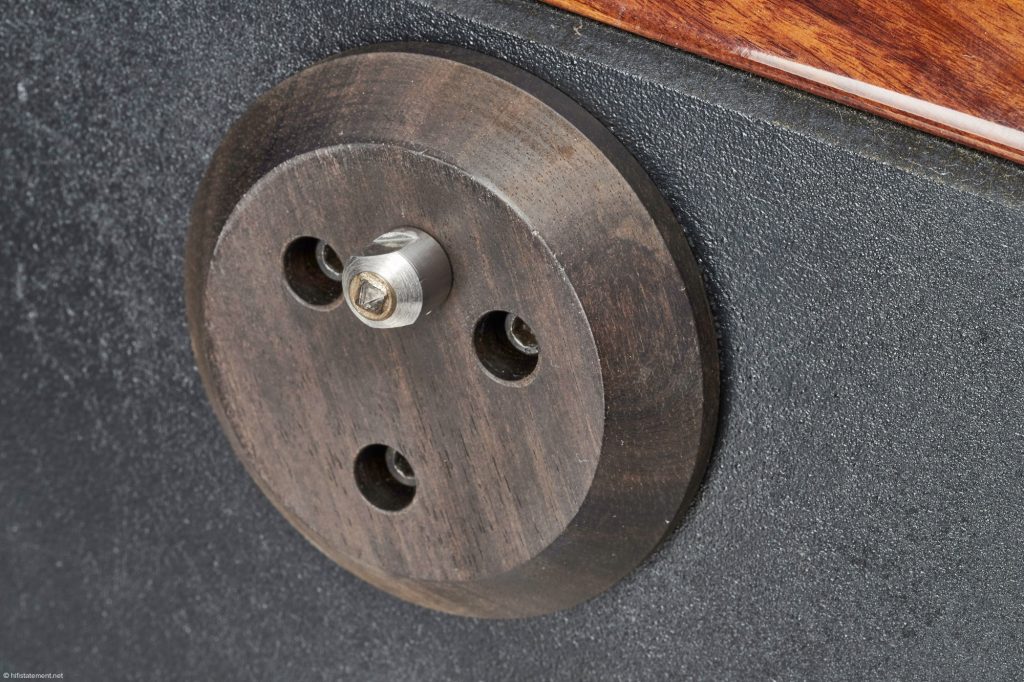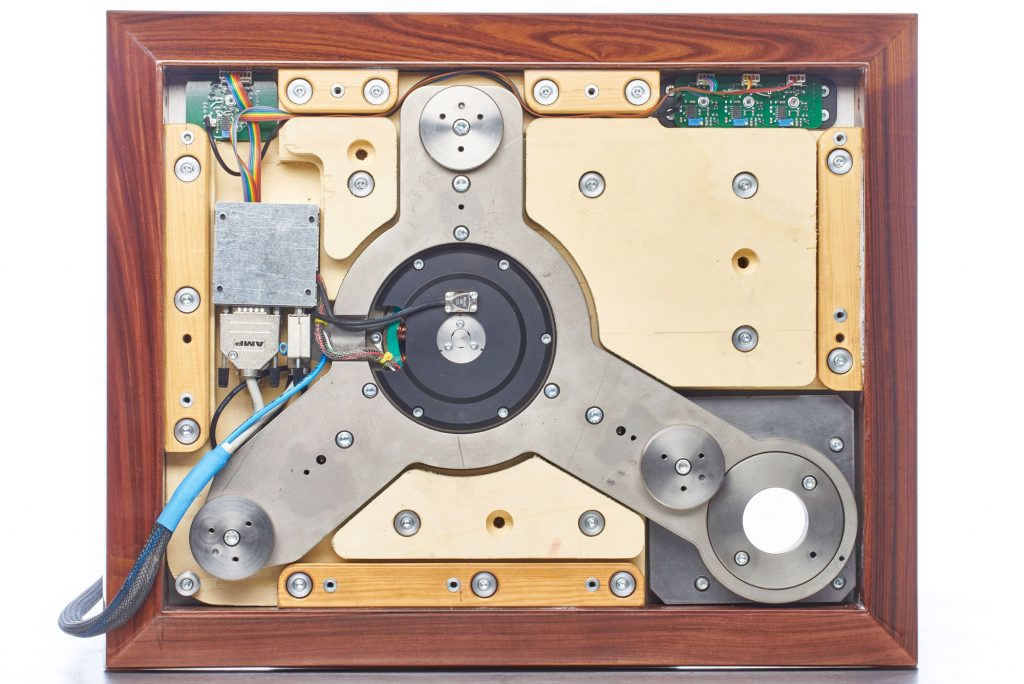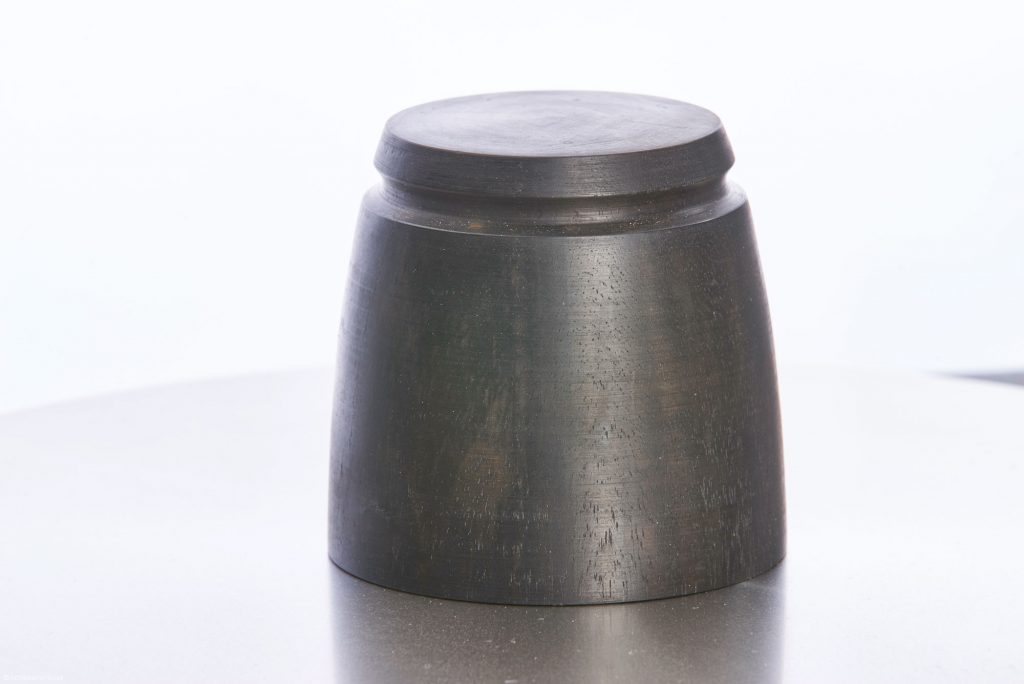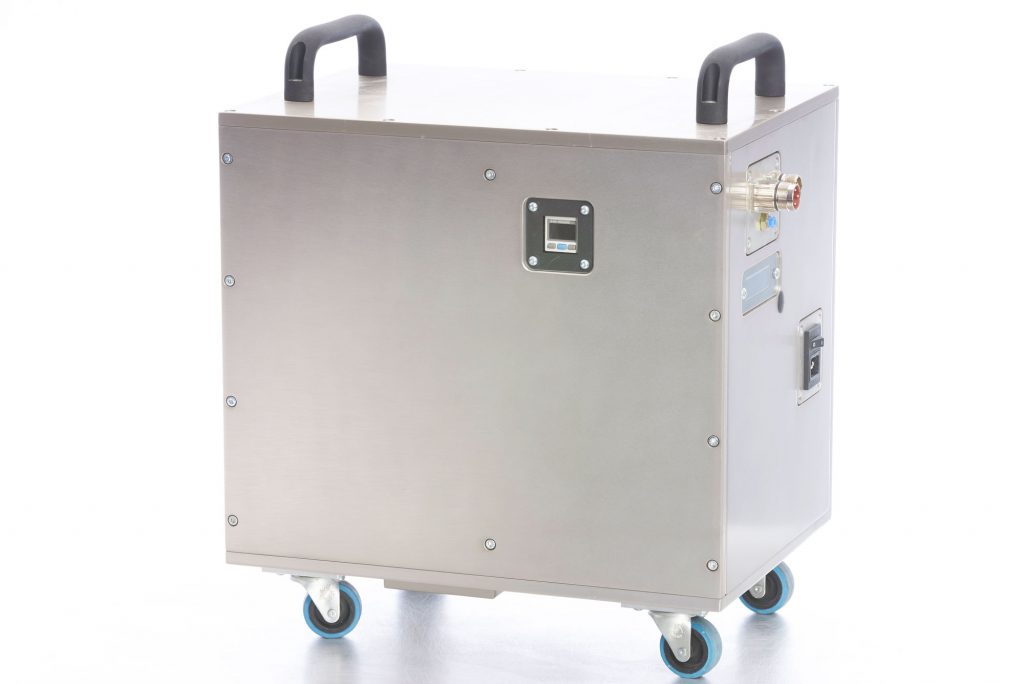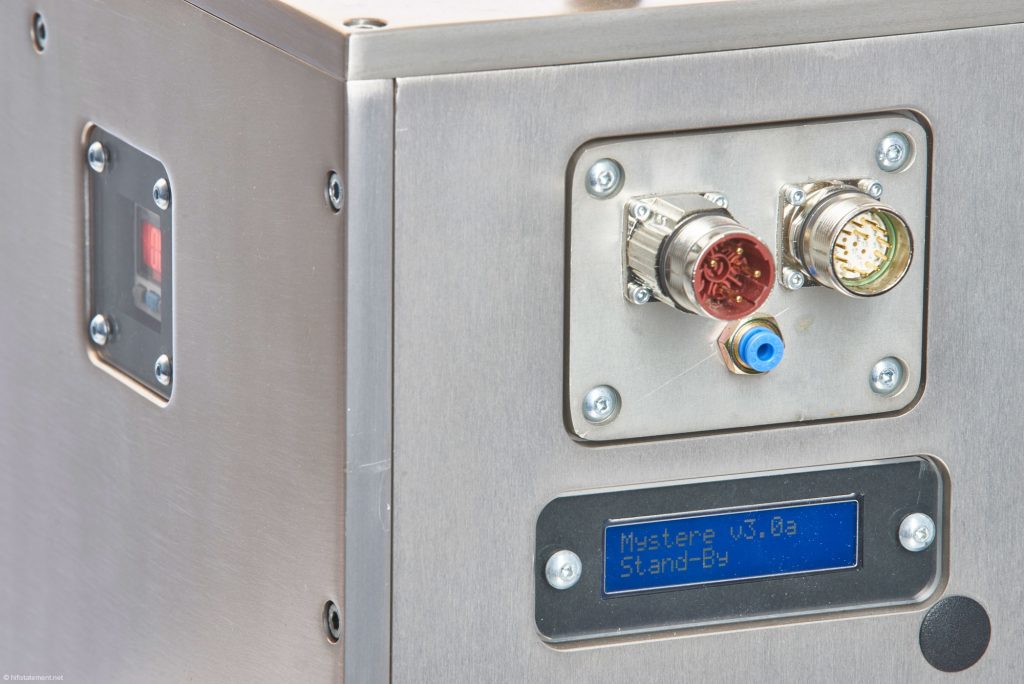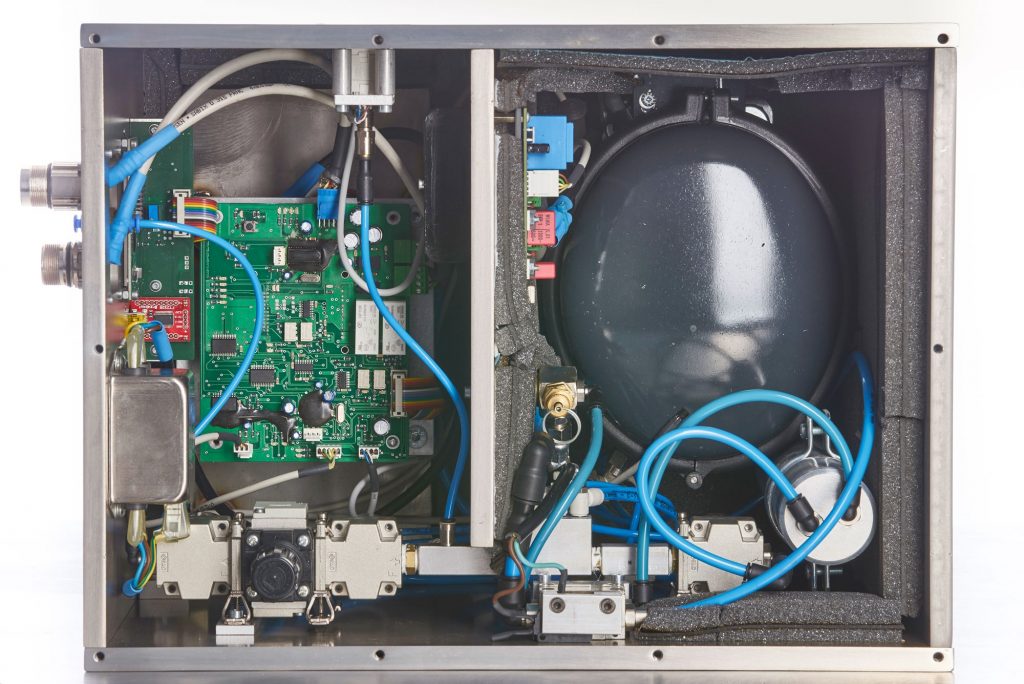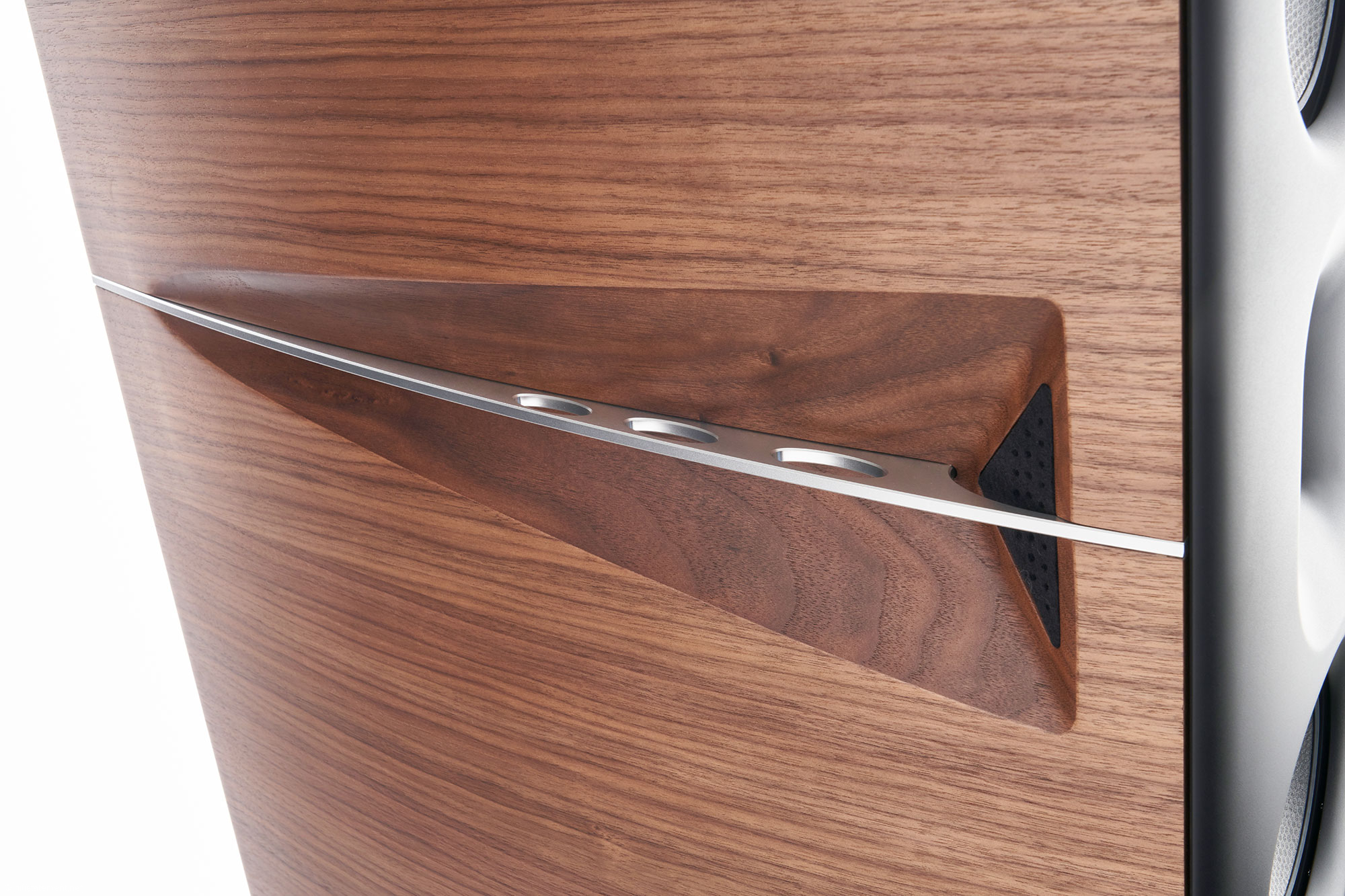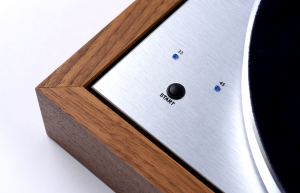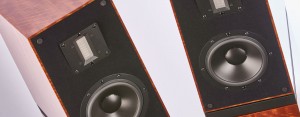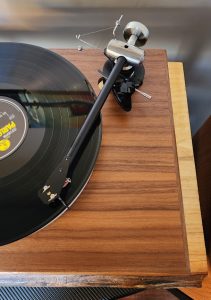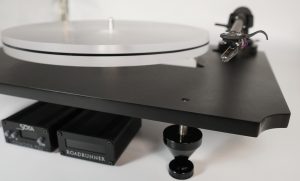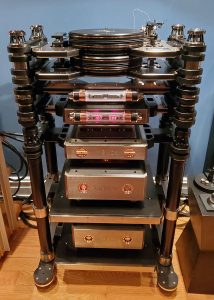From the first glance onwards, the Lumen White Mystere turntable fascinates with its visual elegance and noble appearance. Its beauty however still reveals little about its price class and the technological sophistication at its core. Not to mention its sonic performance.... we are in the presence of a veritable audiophile wolf in sheep's clothing.
17 years ago, at the Vienna Hifi-Show, a colleague and myself discovered the first product of the then-new company, Lumen White, their "White Light" 3-way monitor speakers. It didn't take long thereafter and a pair of "White Lights" found their way into my listening room for a review. To cut the story short: I was immediately smitten. After completing the review, I simply realised that I could not imagine living without these irresistible creations and ended up buying the review pair. A few updates and five years later, a pair of Lumen White "Diamond Light" monitors took their place and have been my personal and professional reference speakers ever since.
Against this background it should be easy to imagine that when I first heard about the existence of a Lumen White turntable, that very information caused considerable anticipation. I immediately requested a unit for review.
Visual elegance with its technological sophistication hidden from view
I don't remember precisely how long it took from there forward—my guess is roughly three to four years—while, intuitively, it felt more like eight. The Mystere is indeed a rare good: the technologies it employs, by nature, make it a limited production item, while demand has been strong from the time of its introduction forward, with the majority of the units going to connoisseurs in the Far East. In the meantime, production could be expanded slightly, and a few weeks ago a Mystere finally arrived to do duty in my listening room. Visitors to the High End 2015 show also had the opportunity to listen to a Mystere, courtesy of Gerhard Hirt, Ayon CEO and Lumen White world-distributor, bringing his demonstration unit to the show.
The speed selection and start-stop buttons become active after the control logic has run through a number of test and safety protocols and the air-pressure has reached its working level
Then, a Mystere alone won't do. Lumen White designer Hartmut Roemer, who already envisioned and developed the company's loudspeakers, naturally has some concrete ideas of what it takes to make his Mystere turntable perform at its best. While he currently sees no tonearm yet which fully matches the turntable's sonic potential, several top-class combinations come to his mind. For those, who love dynamics, aka maximum energy-transfer, the Helius Omega is a natural go-to, which, in my view, also offers a perfect visual match with the Mystere's strikingly organic platter and plinth design. To test two unknown components at the same time, however, is one too much for my taste, and hence I ordered the Mystere with a tonearm base for my Thales "Simplicity" tonearm. Hartmut Roemer recommends the Mystere's three diamond-tipped feet to rest on Shun Mook Mpingo discs and the Shun Mook record clamp as a first choice for his turntable. The latter being an item high in demand but very limited in supply, my review Mystere was delivered with a new Lumen White prototype record clamp. Its design employs a variable angle design which minimizes parallel surfaces, and is manufactured from several premium tonewoods to avoid standing waves.
The platter, manufactured from Lumen White's proprietary "balanced-spectrum alloy," features nearly no parallel surfaces
All of the the Mystere's components and sub-assemblies follow a resonance-optimized, variable-curve and -angle design approach, which is most obviously exemplified in the turntable's elegant platter, with its unique shape devoid of nearly any parallel surfaces. The same design principles apply to the Mystere's interchangeable, high-gloss, solid-wood frame. As Hartmut Roemer mentioned on the side, considerable design efforts and multiple prototypes were necessary to integrate the turntable's complex technologies into such a compact and visually elegant envelope. Personally, I think that the extra effort which has been invested into this aspect of the Mystere's development has paid off more than well. After decades of handling countless turntables with their prevailing industrial "machine" designs, the Mystere's sophisticated beauty and harmonic finesse alone makes one want to have one.
The Mystere's high inertia platter is manufactured from a proprietary "balanced-spectrum alloy"™, which, in combination with its design, is said to reduce parasitic resonances, standing wave-, energy storage- and delayed-release-(memory) effects in the platter. The turntable's custom alloy is rumoured to contain titanium—as one of multiple metals. The Mystere features a proprietary air bearing, which was developed in cooperation with a leading technical university research laboratory. The turntable's custom, aerostatic platter bearing is built to molecular-mechanics research standards to secure, long-term consistency and the lowest technically possible bearing friction under all climate conditions.The bearing maintains the platter fully air-suspended with zero mechanical contact to the rest of the turntable, to provide ultimate immunity of the grove reading process from environmental mechanical impacts and chassis-to-platter energy feedback and feed-through effects. The platter's radial run out (spindle centering) and axial run out (planarity) are specified as well below one micron.
The sub-platter: Its axle has no contact with the platter spindle
The turntable employs a non-cogging, multiple-pole, high-torque motor, again built to molecular-mechanics standards, which are devoid of disperse magnetic flux effects. Its very high spin capacity of up to 1.2 tons eliminates all groove-tracing "brake" and speed-variation effects from the platter rotation, and according to its designer hence provides dynamic signal tracing fidelity and timing precision well beyond belt drives, conventional direct drives and idler wheel drive technologies.
The drive train implements a re-programmable "soft" algorithm, logic drive-controller with up to 16 million times per rotation resolution and is adjusted for a speed ripple of smaller than < 0,08. In addition, the Mystere implements a, new, proprietary "virtual-constant-counterforce" technology to eliminate the typical "after-the-fact" regulation time-lag and regulation-impulse overshoot effects found in alternative speed control systems.
The cut-out for the tonearm base. The latter employs a combination of a custom alloy metallurgy and selected woods for resonance control.
The Mystere comes with a self-contained laboratory-standard compressor unit with integrated air-filter and reservoir, cooling, and moisture-extraction facilities. Its logic controller employs comprehensive safe-run and protection routines. Two digital displays on the compressor-controller unit inform about air pressure and system status. All components of the Mystere turntable system are generously oversized for 24/365 operation to provide long term reliability with the least maintenance requirements.
In his Mystere brochure and designer notes, Hartmut Roemer describes at length why the Mystere design explicitly does not employ conventional damping materials nor mass-damping principles often found in current high-end turntable designs. According to his research, these cause complex time-smearing and overtone deformation and obfuscating due to undesirable energy storage and delayed release effects. Information regarding the alternative technologies and materials employed in the Mystere towards this goal are unfortunately not publicised. Quite the opposite: we were kindly asked to not explicitly highlight certain technologies of the Mystere turntable system in our photos. Having followed the brand for over 15 years, I have come to make my peace with this information policy, as I have found Lumen White products to speak for themselves where it really counts—design excellence and sonic performance.
One of the Mystere's three feet featuring a combination of metal, wood and a diamond tip.
Once the Mystere turntable and its controller/compressor unit had made it into my listening room, their assembly was a children's game: Simply connect the approximately 2 meter long combined air-pipe and control cable assembly to the corresponding three connectors on the compressor/controller unit, and you are ready to go. The length of the cable assembly suggests the latter was designed for placement in the listening room, which was confirmed in practice, as the compressor works extremely silently, or close to noiseless. The compressor-controller unit features a power switch above its IEC-power plug, while the turntable itself has a standby switch. After switch on, the system takes a moment to build the air-pressure while the system completes several test- and safety routines, before it indicates—via a color-change of the turntable's speed selection knobs—that its ready to play.
After the tonearm has been mounted, Lumen White's high tech machine is as easy to use as, for example, a Thorens TD126. The only thing the Mystere is choosy about is warped records. The turntable's clamp intentionally does not feature any screw-down mechanism and hence will not force-flatten strongly warped records. That said, forced clamping, as, for example, found on my LaGrange turntable, doubtlessly causes considerable tension in the records' material, which poses legitimate questions regarding possible sonic consequences. As regards warped records, I would expect any potential Mystere buyer to already own or be willing to acquire a record flattener to take care of them.
The turntable's underside: the three-armed core structure is manufactured from the same "balanced spectrum alloy" used in the platter and throughout the turntable.
To warm up my system, I listened to Art Farmer and Jim Hall's Big Blues record and was immediately struck by the power which the Mystere, Thales, and Lyra Etna combination brought to the music's micro- and macro-dynamics, and by a so-far-unheard impact and precision in the reproduction of transients. This extra energy projection persisted after I exchanged the Etna cartridge for an Lyra Olympus. After having spent considerable time studying the Mystere's technical design, I tend to attribute these outstanding dynamic capabilities to its custom motor's enormous torque. That said, for a few years now I have made it a policy not to try and link specific sonic attributes of an audio component to a single one of its technical features as, fortunately, neither the reproduction nor the perception of music are mono-causal phenomena. Hence, I prefer to describe my listening impressions without the invocation of any such single-track technological interpretations. The Mystere simply excels in reproducing even intimately known records in a superior fashion by uncovering more of their dynamic and rhythmic content than pretty much all other turntables I know. Whether this capability is due to its high torque drive train or possibly the result of a superior freedom from parasitic resonances may have to remain an open question. Obvious however, is the pitch-black background of silence from which the Mystere makes all notes emerge.
This Lumen White prototype record clamp is not commercially available yet, but employs the same design principles as found in the turntable itself.
While I am a great fan of dynamic and rhythmic performance, they only play a subordinate role when it comes to my evaluation of the Mystere's sonic capabilities. As mentioned before, they struck me as sonically remarkable when I had tried the Lyra Etna cartridge. Hence, I revisited the same records again after I had exchanged it with the Lyra Olympus in order to get a picture of the nature of the two cartridges. By that time I had already gathered quite some experience with the Mystere, enough to let me know that upon first contact, the turntable's sound appears completely unspectacular. If one, for example, has just listened to a record on another high-end turntable and then moves tonearm and cartridge over to the Mystere, one recognises right away that it does everything right and that it does not commit even the smallest sonic mistake. But this experience is foremost an experience of an absence of "sensations," as no single aspect, no specific frequency range or individual discipline sticks out or attracts the listener's attention more than any or all others. However, the longer one then listens to the Mystere, the more it invariably dawns upon the listener the extremely high level at which this turntable does in fact perform. The Mystere simply delivers edge of the art performance in all disciplines, while in other top turntables different areas of performance can often be found conflicting with each other.
If we, for example, look at its performance from the "transparency vs. musicality" perspective, we find that while, on one hand, the Mystere possesses a exemplary level of transparency and retrieves an staggering wealth of sonic details from any recording, it, at the same time, always presents the music as a holistic, flowing, emotionally communicating wholeness. In an equally synergistic and natural way it combines authoritative bass with fast-footed agility, while in other turntables powerful bass more often than not comes at the cost of a pervasive reluctance or slowness in their overall sound. Hence, when I mentioned the Mystere's exemplary dynamic and rhythmic capabilities in the context of my cartridge tests, those specific performances are merely representative of the turntable's handling of all others disciplines.
In addition, if we examine the Mystere's portrayal of sonic space, we will easily recognise increased "air" in one recording, a wider sound-field in others, or a deeper "soundstage" in still another track. But in order to be able to single out such individual qualities in the performance of the Mystere, one actually must make a considerable effort and concentrate on a specific area, in order to be able to extract such specific qualities from within the turntable's integrated and holistic performance. In a unique way, the Mystere literally forces the listener to experience music as the wholeness it is meant to be, instead of presenting it as an synchronicity of dissectible parts.
The compressor & motor controller unit conveys an idea of the extensive technological effort which went into the Mystere turntable system.
A major contribution to this exemplary performance certainly results from the fact that the Mystere adds no discernible mechanical artifacts to the sound, a quality which, besides in the Mystere, I have only found with the big Continuum and the Airforce One—and to a lesser extent, the Bergmann Sleipner decks. To illustrate the point: If one affords oneself the luxury and plays an original LP master-lacquer on the Mystere, the sound is clearly more representative of the sound of the original master-tape than when performing the same test on very good high mass turntables.
The display on the left shows the air pressure, while the blue displays informs about the system status, software version and the temperature of the air-stream supplied to the air-bearing. Above the display are the connectors for the air and control cable assembly.
Keith Jarrett's Koeln Concert is a record I return to regularly, as Jarrett's improvisations never fail to fascinate me. For convenience sake, I usually listen to the 96kHz digital file played back via my computer & DAC setup. As I had reached a stage in the review, where any further search for individual strengths and weaknesses in the Mystere's sound had become obsolete, I selected the original white double LP version of Keith Jarrett's masterpiece for my last listening session before the Mystere was scheduled to leave my listening room. While I don't want to warm up the old analog-versus-digital discussion here again, there is no denying the fact that never before have I heard this fantastic recording reproduced even close to the emotionally gripping, musically fluid, and dynamically supercharged way in which the Mystere presented it—whatever the digital source, format and cost involved in those other auditions. And I like to add that, of the numerous turntables which I have come to know over my many years of reviewing them, more than 99.9% are unable to reproduce Keith Jarrett's masterpiece with the lifelike intensity it regains via the Mystere.
If You listen to the Mystere fitted with a reference class tonearm and cartridge combination for only a short time, you may possibly get away from it "unendangered". If, however, you spent several hours with it, you will—as happened to me—become unsaveably addicted to it.
A look inside the compressor unit
STATEMENT
The Mystere turntable is a veritable analogue dream: It amalgamates sound, technology, and visual beauty in a close-to-perfect way. The Mystere reproduces music in an extremely natural manner as a complete whole, nearly devoid of mechanical artifacts, and strikingly reminiscent of the original master-tape. In my memory, only the big Continuum and Air Force One turntables approach this level of performance, but my experience with them dates back too long to place them reliably in a line of order. The Lumen White Mystere is one of the three best turntables that I have had the privilege to listen to. Visually, it easily is the most attractive of the three.
Review system
- Turntable: Brinkmann LaGrange with vacuum tube power supply.
- Tonearms: AMG Viella 12‟, Thales Simplicity.
- Cartridges: Brinkmann EMT ti, Lyra Olympos SL, Einstein The Pickup.
- Phonostage: Einstein The Turntable's Choice (balanced).
- Preamplifier: Einstein The Preamp.
- Amplifiers: Ayon Epsilon, Einstein The Poweramp.
- Loudspeaker: Lumen White DiamondLight Monitors, AudioMachina Maestro GSE.
- Cables: Precision Interface Technology, Göbel Lacorde Statement, Audioquest Wild Blue Yonder and Wild Wood, HMS Gran Finale Jubilee, Audioplan Powercord S.
- Accessories: PS Audio Power Plant P5, Clearaudio Matrix, Sun Leiste, Audioplan Powerstar, HMS-Walloutlets, Acapella Bases, Acoustic System Feet & Resonators, Finite Elemente Pagode Master Reference Heavy Duty und Cerabase, Harmonix Real Focus, Audio Exklusiv d.C.d Base, Feet und Silentplugs, AHP Fuses.
Lumen White Mystere Turntable System
- Speeds: 33⅓, 45 RpM (78 and other on request)
- Finish: Solid ebony, palisander or rosewood (other woods and high-gloss, black piano lacquer on request)
- Dimensions: Turntable: 50 cm wide and 40 cm deep, weight 45 kg. Outboard compressor & controller unit: 54 cm long, 40 cm wide, 40 cm deep, weight 45 kg, Air supply and control cable: 2 meters (up to 10 meters on request
Retail: 62500 Euro
Lumen White
EU Distributor
Ayon Audio
Hart 18, A-8101
Gratkorn
+ 43 3124 24954
U.S.A. Distributor
Ayon Audio USA
8390 E. Via De Ventura – F110-194
Scottsdale, Arizona 85258
1-888-593-8477
Toll Free USA & Canada 1-310-601-7976,
Mexico 52-55-8525-6102




